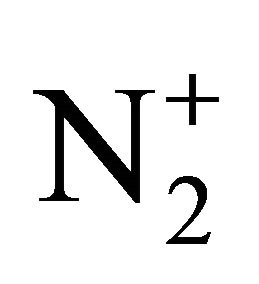BG3 Glass Filter Effects on Quantifying Rapidly Pulsating Auroral Structures ()
Abstract
The extensive use of Schott BG3 glass filters in auroral physics demands an accurate characterization of the filter performance when observing actual auroral structures. We present observations from two identical Andor DU-888 imagers operated side-by-side, one equipped with a BG3 glass filter and the other one unfiltered, observing the same auroral structures. The BG3 glass filter decreased the overall signal levels, increasing the relative intensity variations of the fast pulsating aurora by a few percent. This, however, also produced a slightly decreased signal-to-noise ratio, making it more difficult to quantify the rapidly varying auroral structures. This comparison shows that BG3 glass filters can be useful in reducing the overall signal levels which is important in dynamic, bright, substorm onset aurora, where EMCCD imager saturation has been known to occur. Consequently their use does not significantly affect the observation of the dynamics within the aurora but it also does not enhance the ability to quantify the features of rapidly varying auroral structures.
1. Introduction
BG3 glass is often used in auroral imaging in order to filter out the bright, yet slow emissions, enabling the fainter prompt emissions to be imaged [1,2]. This has long been believed to significantly enhance the ability to image rapidly varying auroral structures. The two main auroral emission lines that typically dominate the signal detected by an unfiltered imager are 557.7 nm and 630.0 nm [3]. These result from electronic transitions of the atomic oxygen from the 1S to the 1D state and from the 1D to the 3P state [4] with fairly long radiative lifetimes of 0.74 s and 110 s, respectively [3]. These long lifetimes are thought to result in spatio-temporal smearing of the rapidly varying auroral structures, such that the observable emissions do not correspond one-to-one with the electron precipitation structures causing them.
The Schott BG3 glass filter is a notch filter with a transmission curve such that it removes both the 557.7 nm and the 630.0 nm emissions, yet passes the prompt (microsecond to nanosecond lifetimes) blue and nearinfrared emission lines of N2 and . Therefore BG3 glass filters are used with low-light-level imagers such that the rapidly moving and time-varying auroral structures may correspond one-to-one with the electron precipitation responsible for exciting them. BG3 glass has two main passbands, one from ~250 nm to ~500 nm and another from ~700 nm to ~1100 nm. The detailed transmission curve of BG3 glass along with actual transmittance values for specific wavelengths can be found in the BG3 glass technical description [5].
. Therefore BG3 glass filters are used with low-light-level imagers such that the rapidly moving and time-varying auroral structures may correspond one-to-one with the electron precipitation responsible for exciting them. BG3 glass has two main passbands, one from ~250 nm to ~500 nm and another from ~700 nm to ~1100 nm. The detailed transmission curve of BG3 glass along with actual transmittance values for specific wavelengths can be found in the BG3 glass technical description [5].
Although this imaging scheme fits together nicely in theory, it has yet to be rigorously tested on auroral structures. This is partly due to the need for running two identical imagers simultaneously, side-by-side, observing the same aurora. Additionally, there are many types of auroral structures which can show rapid motion or temporal variations and each is caused by different precipitating electron spectra. This article presents the results of such a side-by-side comparison of rapidly varying pulsating auroral structures imaged both unfiltered and through a BG3 glass filter.
2. Observations
The auroral event examined here was observed on 08 March 2009 from Poker Flat, Alaska. Two Andor Electron Multiplying CCD (EMCCD) imagers were used for these observations. One imager is part of the AMISR suite of instruments at Poker Flat and is operated by the University of Alaska, Fairbanks, while the other was on loan from Andor. Both imagers were the Andor DU-888 model which has a 1024 × 1024 chip, with internal binning capabilities that allow tradeoffs between temporal and spatial resolution. Each was equipped with a 50 mm Cannon f/0.95 lens to provide a narrow field of view (15 deg. × 15 deg.). The two imagers were mounted side-by-side on the same mount and were operated independently. The data acquisition mode used resulted in many individual series of 1000 images, each covering approximately 30 seconds. The fields of view of the two imagers were not exactly aligned, so a sub-array of approximately 200 × 200 pixels was extracted where the data from each imager overlapped. A time series of 27 seconds was chosen where data were recorded with both imagers simultaneously.
For these observations, the CCDs were cooled to −70 deg. C to reduce thermal noise and were set to 4 × 4 binning, resulting in a 256 × 256 pixel image at 33.58 frames per second. This configuration was chosen because it provides adequate temporal resolution (16 Hz) for fast pulsating aurora while maintaining a reasonable spatial resolution of 0.058 degrees per pixel or approximately 100 meters per pixel at 100 km altitude.
Figure 1 shows two example images, recorded simultaneously, with a relative timing error of less than 33 ms. The left image was recorded with no filter, while the right image was recorded using a BG3 filter. The dark lines denote the location of the intensity cuts used to make the keograms. The images are oriented with North (Geomagnetic) at the top and East to the left. Assuming 100 km altitude for the aurora, the 15 deg. × 15 deg. FOV of the imager corresponds to a spatial scale of approximately 25 by 25 km.